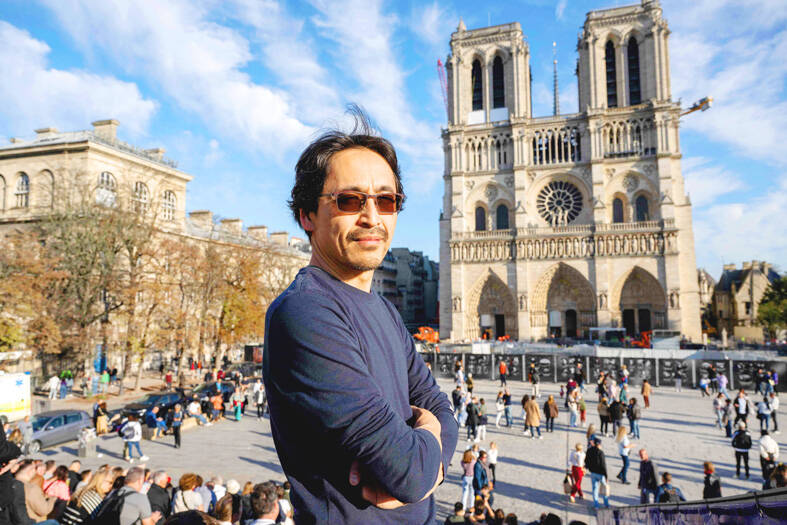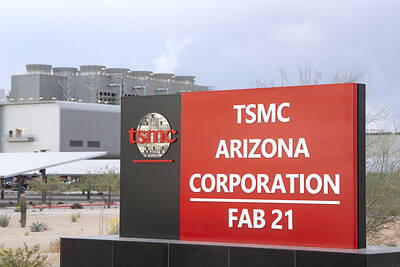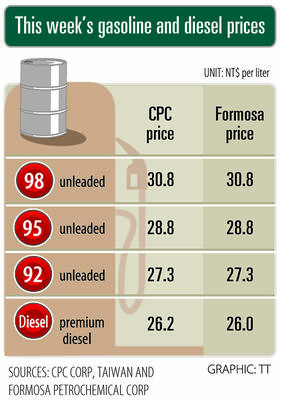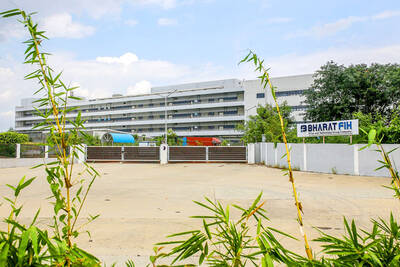Itaru Sekiguchi first heard the Great Organ of the Paris Notre Dame cathedral when he was 10. The “infernal sound” changed his life forever.
“It was a bit of a culture shock,” he said.
Today the Japanese, 53, is one of a handful of specialists entrusted with tuning and voicing the fabled instrument as Notre Dame prepares to reopen on Dec. 7 after a devastating fire in 2019.

Photo: AFP
The near 300-year-old colossus was miraculously spared by the flames.
Sekiguchi moved to France in his 20s to become an organ builder and restorer, dreaming of a chance to work on the “voice” of the masterpiece of Gothic architecture.
“I wanted to come to France because that’s where it’s happening, but when I told my family, they thought I was a bit out of my depth,” said Sekiguchi, who hails from Sendai in northeastern Japan, speaking in fluent French.
In 2018, he became the cathedral’s official organ builder, responsible for the day-to-day maintenance of France’s largest musical instrument, which is the height of a four-story building.
The voice of the monument since 1733, the organ has 8,000 pipes and a sound when in full flight that its players describe as truly symphonic.
“It was my dream. It gave me a chance to get to know the instrument a little better,” said Sekiguchi, who has lived in the central Correze department for a quarter of a century.
For three weeks a month, Sekiguchi handled maintenance operations, including tuning the organ, adapting to the constraints of one of the most visited places in France.
“Time is very limited,” he said. “You have to work at night because otherwise it disturbs the tourists, but also because you need absolute silence for the tuning.”
That dream was short-lived.
A year later, a fire ravaged the cathedral, and Sekiguchi lost his job.
He found solace in knowing that the organ was spared by the flames and was doused with relatively little water as firefighters fought to save the historic structure.
“I was afraid for the organ because during the night we didn’t know what was going on, we had contradictory information, it was a nightmare,” he said.
He is convinced that any major damage would have been irreversible.
“Today, we wouldn’t be able to do the same thing,” he said.
Although it was not directly affected by the fire, the instrument still sustained damage.
Lead residue seeped into the organ and the instrument was further weakened by scorching temperatures during a summer heat wave in 2019.
In December 2020, the organ was dismantled and sent for expert restoration. Three organ-building workshops were involved in the restoration work.
After the work was completed, Sekiguchi and other specialists began to tune and voice the instrument, again working at night.
The question on everyone’s lips is, how will the Great Organ sound after being restored and when the cathedral opens its doors again?
“It’s very difficult to give the right tone. A pipe can speak in 1,000 different ways,” said organ builder Olivier Chevron, who invited Sekiguchi to work on the project.
The task is so specific that the organ builders make their own tools, some of which have no name, and rely on their know-how and subjectivity.
“It’s difficult to describe the sound of a great organ,” said organ builder Bertrand Cattiaux, who hired Sekiguchi in the early 2000s.
“For me, it reflects the sound color of the cathedral,” said Cattiaux, who was in charge of the maintenance of the Great Organ at Notre Dame for many years. “It was a warm instrument, not tense or aggressive.”
Sekiguchi has also been summoning his memories to help voice the instrument.
Despite the mammoth task, he has relished the opportunity to help restore the French icon.
“It’s a lot of things, a lot of honor, but also a lot of work and responsibility,” he said. “It’s just incredible.”

Taiwan Semiconductor Manufacturing Co (TSMC, 台積電), the world’s biggest contract chipmaker, booked its first-ever profit from its Arizona subsidiary in the first half of this year, four years after operations began, a company financial statement showed. Wholly owned by TSMC, the Arizona unit contributed NT$4.52 billion (US$150.1 million) in net profit, compared with a loss of NT$4.34 billion a year earlier, the statement showed. The company attributed the turnaround to strong market demand and high factory utilization. The Arizona unit counts Apple Inc, Nvidia Corp and Advanced Micro Devices Inc among its major customers. The firm’s first fab in Arizona began high-volume production

VOTE OF CONFIDENCE: The Japanese company is adding Intel to an investment portfolio that includes artificial intelligence linchpins Nvidia Corp and TSMC Softbank Group Corp agreed to buy US$2 billion of Intel Corp stock, a surprise deal to shore up a struggling US name while boosting its own chip ambitions. The Japanese company, which is adding Intel to an investment portfolio that includes artificial intelligence (AI) linchpins Nvidia Corp and Taiwan Semiconductor Manufacturing Co (TSMC, 台積電), is to pay US$23 a share — a small discount to Intel’s last close. Shares of the US chipmaker, which would issue new stock to Softbank, surged more than 5 percent in after-hours trading. Softbank’s stock fell as much as 5.4 percent on Tuesday in Tokyo, its

The prices of gasoline and diesel at domestic fuel stations are to rise NT$0.1 and NT$0.4 per liter this week respectively, after international crude oil prices rose last week, CPC Corp, Taiwan (台灣中油) and Formosa Petrochemical Corp (台塑石化) announced yesterday. Effective today, gasoline prices at CPC and Formosa stations are to rise to NT$27.3, NT$28.8 and NT$30.8 per liter for 92, 95 and 98-octane unleaded gasoline respectively, the companies said in separate statements. The price of premium diesel is to rise to NT$26.2 per liter at CPC stations and NT$26 at Formosa pumps, they said. The announcements came after international crude oil prices

SETBACK: Apple’s India iPhone push has been disrupted after Foxconn recalled hundreds of Chinese engineers, amid Beijing’s attempts to curb tech transfers Apple Inc assembly partner Hon Hai Precision Industry Co (鴻海精密), also known internationally as Foxconn Technology Group (富士康科技集團), has recalled about 300 Chinese engineers from a factory in India, the latest setback for the iPhone maker’s push to rapidly expand in the country. The extraction of Chinese workers from the factory of Yuzhan Technology (India) Private Ltd, a Hon Hai component unit, in southern Tamil Nadu state, is the second such move in a few months. The company has started flying in Taiwanese engineers to replace staff leaving, people familiar with the matter said, asking not to be named, as the